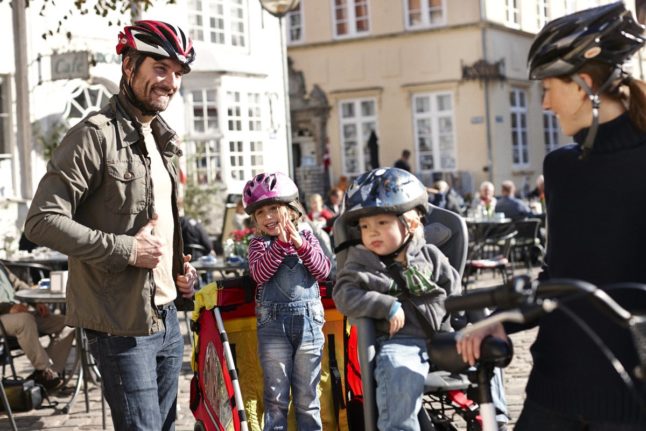At a glance: travel to and from the UK, US, and Australia
The UK is still technically classed as orange at the time of updating this article, meaning travellers need a worthy purpose to travel to Denmark unless they’re fully vaccinated. However, only Wales is actually classed as orange as of July 17th, with everywhere else now a red region within the UK. This means all travellers from England, Northern Ireland and Scotland will need to present a PCR test taken within the past 72 hours before boarding a plane to Denmark and will need to isolate upon arrival, even if previously vaccinated or infected. Danes are strongly discouraged against travel to the UK.
Travellers from the US and Australia will not have to isolate upon arrival and only people who are neither vaccinated nor previously infected need to be tested before entry. Danes may find travel to the US and Australia difficult or impossible.
Green countries
This update introduces a green risk category that applies to EU/Schengen countries with fewer than 50 cases per week per 100,000 inhabitants.
Travellers from green countries will no longer need to take a coronavirus test on arrival in Denmark, as they did when these countries were classed as yellow.
Green countries currently cover most of the EU: Belgium, Bulgaria Cyprus, France (excluding the overseas territories of Guadeloupe, Guyana, Martinique and Mayotte), Greece, Italy, Croatia, Lithuania, Luxembourg, Malta, Poland, Romania, Switzerland, Slovakia, Slovenia, Sweden, the Czech Republic, Germany and Austria.
Some regions in otherwise yellow countries are also considered green: Portugal’s Madeira and Spain’s Aragon, Asturias, Balearic Islands, Castilla-La Mancha, Castilla y León, Catalonia, Ceuta, Extremadura, Galicia, Madrid, Melilla, Murcia and Valencia.
Yellow countries
EU/Schengen countries with 60 or more new COVID cases per week per 100,000 inhabitants are now yellow: Andorra, Liechtenstein, Monaco, Portugal, San Marino, Spain and Vatican City.
EU residents travelling to Denmark from yellow countries and regions no longer need to isolate after arrival, or take a test before boarding their planes, but Danes considering travel to yellow countries are urged to be cautious.
Outside the EU/Schengen area, Albania, Lebanon, Northern Macedonia, Rwanda and Serbia are yellow.
Orange countries
All countries outside the EU/Schengen area with a high risk of infection—but without significant levels of dangerous variants circulating—are orange. Travellers from orange countries need a worthy purpose to enter Denmark unless they are fully vaccinated and from an OECD country. Vaccinated people from non-OECD countries need a worthy purpose and a negative COVID test prior to entry, according to the Ministry of Justice. The Danish government advises Danes against unnecessary travel to orange countries.
Red countries
Red denotes areas where worrisome levels of coronavirus variants are circulating. Travellers from red countries and regions will need a PCR test from within the previous 72 hours before boarding an aircraft to Denmark and will have to isolate upon arrival. Within the EU/Schengen area, Reunion in France and three regions in the UK (Bedford, Blackburn with Darwen, Bolton and Rossendale) are red.
Farther afield, Bangladesh, Brazil, Botswana, Eswatini, Mozambique, Nepal, India, Lesotho, Zambia, Malawi, South Africa and Zimbabwe are all red.
Danes are strongly encouraged to avoid travel to red countries and should consult with a doctor if it’s unavoidable.
‘Shaded orange’ countries
Shaded orange now designates an area or country with low virus circulation, but entry restrictions that would make it difficult or impossible for Danes to visit. In the opposite direction of travel—from shaded orange countries to Denmark—they’re functionally yellow.
The Danish Ministry of Foreign affairs currently discourages travel to the following: Australia, the special administrative regions of Hong Kong and Macau, Israel, Japan, New Zealand, Singapore, South Korea, Taiwan, Thailand and the United States.



 Please whitelist us to continue reading.
Please whitelist us to continue reading.
Good morning,
I live in British Columbia Canada, our COVID numbers are low!
You mention travel from the US but never mention Canadian travellers. I am Danish born and visit my homeland quite often. We cancelled our trip home for this year but plan to come next year! I’m sure all will be well by then. Do you include Canada in your reference to US citizens traveling to Denmark! I feel Canada is even safer than the US!! Thank you, Inger